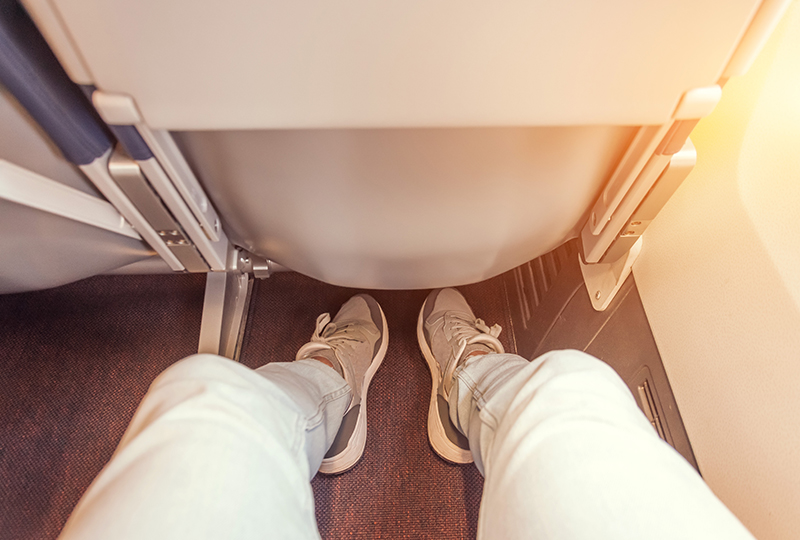Keeping your ankles moving is key to ensuring healthy blood flow from the legs to the heart.
Imagine you’ve just arrived on your dream vacation. Beautiful scenery, fabulous food and much-needed relaxation await. Blood clots are the furthest thing from your mind.
But soon after your 10-hour flight lands, you start to notice tenderness and swelling in your leg. You may even feel lightheaded or have difficulty breathing.
What’s going on?
“When we travel, we’re seated for long periods of time. We also don’t drink much to avoid using the airplane’s restroom or stopping the car too often. Unfortunately, this is commonly how blood clots are formed.”
Unfortunately, you may be experiencing a potentially dangerous blood clot.
Prolonged sitting and dehydration caused by lack of fluid intake make up a classic scenario for blood clots to form, said Dr. Stephen F. Daugherty, a vascular disease specialist and surgeon at the Vanderbilt Vascular Surgery Clarksville.
“When we travel, we’re seated for long periods of time. We also don’t drink much to avoid using the airplane’s restroom or stopping the car too often. Unfortunately, this is commonly how blood clots are formed,” Daugherty said.
Others at high risk for developing blood clots include people who are hospitalized or experiencing illnesses at home, as well as those with pneumonia, infections or traumatic injuries. Genetics can also play a role in a person’s susceptibility to form clots, Daugherty said.
Thankfully, there are ways to reduce your risk of developing blood clots, whether traveling, at home, in the hospital or even at work.
Ways to keep your blood pumping
“Our legs are most often in a dependent position, which means they are hanging down. This causes the gravitational force in our legs to slow the flow of blood back to the heart,” Daugherty said.
Elevating your legs helps pump blood toward the heart, but it may not always be convenient to prop up your legs. An alternative that Daugherty recommends to get your blood moving is a simple act called calf muscle pumping, which involves repeatedly pumping your ankles up and down.
“If you’re seated for a long time, frequently moving your ankles up and down really helps to keep the blood flowing.”
“If you’re seated for a long time, frequently moving your ankles up and down really helps to keep the blood flowing. I tell patients who are about to have knee operations that as soon as they wake up, they need to start moving their ankles up and down to exercise those muscles and get the blood pumping,” Daugherty said.
For those who are able, walking and bicycling are also excellent ways to exercise the calf muscles and prevent blood clots from forming in the legs.
“Bicycling is an excellent, low-impact way to exercise your calf muscles and extend the ankles,” Daugherty said.
Elevating the legs higher than the heart two or three times a day, even if only for a few minutes, is also beneficial for people with swelling or significant leg problems.
Another option to consider is the use of support hose, also known as compression stockings. This snug-fitting hosiery squeezes the calf and helps prevent the veins from becoming overly stretched. The hose also speeds up flow of blood out of the legs.
“When you’re doing calf muscle pump exercises, you actually get better flow of blood out of your legs when you’re wearing support hose,” Daugherty said.

Need help?
You don’t have to live with discomfort. The experts at Vanderbilt Vascular Surgery Clarksville can help with vein problems in the legs that cause symptoms such as itching, heaviness, swelling, tiredness and sometimes, pelvic pain.

